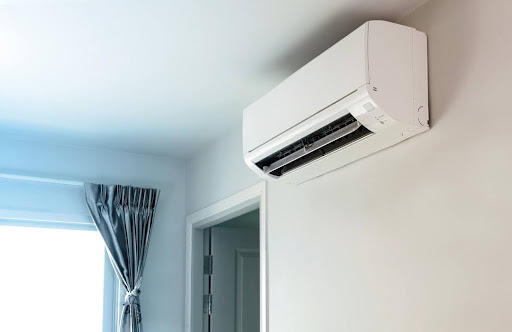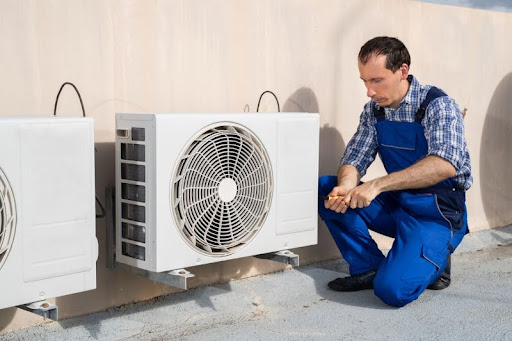When considering the energy consumption of a window air conditioner (AC), it’s crucial to factor in its wattage. Typically, window AC units consume varying amounts of power depending on their size and efficiency ratings. On average, a window AC unit can range from 500 to 1500 watts. Understanding the wattage of your window AC is essential for managing energy costs and environmental impact. Let’s delve deeper into the intricacies of window AC power consumption.
Factors Affecting Window AC Power Consumption
The power consumption of a window AC can vary based on several factors. Let’s explore the key factors that influence how many watts a window AC uses.
Size and Capacity of the Window AC
The size and capacity of a window AC play a significant role in determining its power consumption. Generally, larger AC units with higher cooling capacities tend to consume more power. A higher cooling capacity is necessary for larger rooms or spaces with greater heat loads. It is essential to choose an adequately sized window AC that matches the cooling requirements of the room to ensure energy efficiency.
Window AC Temperature Settings and Thermostat Usage
The temperature setting and thermostat usage directly impact the power consumption of a window AC. Lower temperature settings require the unit to work harder and consume more energy. It is recommended to set the thermostat at a comfortable temperature, typically between 72°F and 78°F, to balance cooling effectiveness and energy efficiency.
Insulation and Air Leakage in Window AC
Proper insulation and minimizing air leakage in the room or space where the window AC is installed can significantly impact its power consumption. Well-insulated rooms retain cool air more effectively, reducing the need for the AC to run continuously. Additionally, sealing any air leaks around windows and doors prevents the cool air from escaping and helps maintain a consistent temperature, reducing energy waste.
Usage Patterns and Frequency of Window AC
The usage patterns and frequency of running the window AC also influence its power consumption. If the AC is frequently turned on and off or operated for prolonged periods, it can lead to higher energy usage. It is advisable to optimize the usage by setting the AC to a temperature that keeps the room comfortable while minimizing unnecessary runtime.
Additional Features and Functions of a Window AC
Window ACs may come with additional features and functions such as programmable timers, sleep modes, or energy-saving modes. Utilizing these features effectively can contribute to energy efficiency and help reduce power consumption. For example, setting the timer to turn off the AC when the room is unoccupied or activating the energy-saving mode can lead to significant energy savings.
Local Climate
The local climate also affects the power consumption of a window AC. In hotter climates, where the AC needs to work more to maintain a comfortable indoor temperature, the power consumption may be higher compared to cooler climates. Understanding the specific climate conditions in your area can help you make informed decisions regarding the size and capacity of the window AC.
Calculating the Power Consumption of a Window AC
To calculate the power consumption of a window AC, you need to know its wattage and the number of hours it runs per day. The wattage information can usually be found in the product specifications or on the unit itself. Multiply the wattage by the hours of daily usage to determine the daily energy consumption in watt-hours (Wh). You can then convert this to kilowatt-hours (kWh) by dividing by 1000. This calculation will give you an estimate of the AC’s daily energy consumption, which can be used to understand its impact on your electricity bill.
Energy Efficiency Ratings
When purchasing a window AC, it is essential to consider its energy efficiency rating. Energy efficiency ratings, such as the Seasonal Energy Efficiency Ratio (SEER) or the Energy Efficiency Ratio (EER), indicate how efficiently the unit uses electricity to cool a space. Higher SEER or EER ratings signify better energy efficiency. Opting for a window AC with a higher energy efficiency rating can help reduce power consumption and save on energy costs in the long run.
What Size Generator Do You Need For Window AC
If you plan to use a generator to power your window AC during power outages or in off-grid situations, it’s crucial to choose a generator with the appropriate capacity. The size of the generator you need depends on the wattage of the window AC and any other devices you plan to power simultaneously. It is recommended to consult the generator manufacturer’s specifications or seek professional guidance to ensure you select a generator that can handle the AC’s power requirements without overloading.
Energy Saving Tips for Window ACs
To minimize the power consumption of your window AC and reduce energy bills, consider implementing the following energy-saving tips:
Optimal Temperature Settings for Window AC
Set the thermostat at an optimal temperature range between 72°F and 78°F. This temperature range provides a comfortable indoor environment while allowing the AC to operate efficiently.
Proper Insulation and Sealing of Window AC
Ensure proper insulation of the room and seal any air leaks around windows and doors. Well-insulated rooms and reduced air leakage help maintain a consistent temperature and reduce the strain on the AC.
Regular Maintenance and Cleaning of Window AC
Regularly clean or replace the AC filters and ensure that the outdoor unit is free from debris. Clogged filters and dirty condenser coils can restrict airflow, making the AC less efficient and increasing power consumption.
Utilizing Energy Saving Modes in Window AC
Make use of the energy-saving modes, sleep modes, or programmable timers available in your window AC. These features help optimize energy usage by automatically adjusting temperature settings or turning off the AC when not needed.
Using Window Treatments for Temperature Regulation
Use window treatments such as blinds, curtains, or reflective films to control the amount of sunlight entering the room. By minimizing direct sunlight, you can reduce the heat gain and lessen the workload on the AC.
How Can Solar Panels Save Your Window AC Energy Bills?
Solar panels can be an effective solution to reduce your window AC’s energy bills. By harnessing clean and renewable solar energy, you can offset a significant portion of your AC’s power consumption. Solar panels convert sunlight into electricity, which can be used to power your AC and other appliances. By reducing reliance on the grid, solar panels can lower your electricity costs and contribute to a more sustainable energy future.
How Many Solar Panels Do You Need To Run An Window AC?
The number of solar panels needed to power a window AC depends on several factors, including the AC’s wattage, local solar resources, and energy consumption goals. To determine the optimal number of solar panels, it is advisable to consult with a solar energy professional who can assess your specific needs and design a customized solar system that meets your AC’s power requirements.
Key Takeaways About Window AC Wattage
Understanding how many watts a window AC uses is crucial for managing energy consumption and making informed decisions. The power consumption of a window AC is influenced by factors such as size and capacity, temperature settings, insulation, usage patterns, additional features, and local climate. Calculating power consumption, considering energy efficiency ratings, and implementing energy-saving practices can help reduce energy bills. If you are considering solar panels, consult a professional to determine the number of panels needed to power your window AC. With these insights, you can optimize your cooling needs while being mindful of energy usage.




